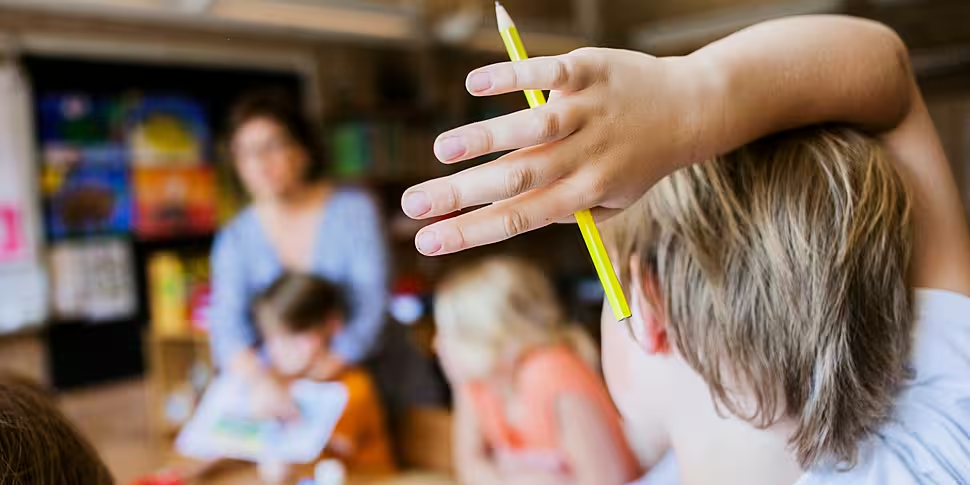The number of children in a classroom has a "huge effect" on pupils in disadvantaged areas, according to the principal of a DEIS school.
As schools across the country welcome back students this week, some classrooms in rural Ireland are reporting having ratios of 35 students to one teacher.
Speaking to The Pat Kenny Show, Cnoc Mhuire Senior School in Dublin principal Orla Hanahoe said the numbers are "shocking".
"We're a DEIS school so we have smaller class sizes. So, I would be in the position that our average class size at the moment is 22," she said.
"We would be in an area of extreme disadvantage, and we believe that class size is paramount.
"Our class sizes should be even smaller than 20-to-one so really, I think the size has a huge effect on children.
"I think that's shocking that there are children in classes of over 30 in this day and age."
Diversity
Ms Hanahoe said the increase in diversity in the classroom has meant that teaching has become more "complex" in the last 20 years.
"There's a lot of children in our classrooms, there's a lot of migrant children, children with dyslexia, dyspraxia, and autism and all those children need so much more care and attention and differentiation," she said.
"The bigger class, it's disadvantaging the children because the teacher doesn't have as much capacity to manage the class or to prepare the tailored, individual and small-group learning."
Discipline
Ms Hanahoe said larger classes also make it more difficult for teachers to discipline students.
"If the numbers are so big, it's crowd control," she said.
"You [have] disciplinary issues [when] trying to manage the behaviour of the children."
'Love and care'
In order to help disadvantaged children's development, Ms Hanahoe said teachers rely on additional help in the classroom.
"If there's an SNA in the classroom, that SNA might give a little bit [of help]," she said.
"Very often, those are the children who need more attention from the teacher, a little bit more care and love really.
"That can get lost and maybe their special needs not be identified if there are 30 other children in the classroom because it's he who shouts loud enough is heard.
"They're the children I worry about, actually, the quiet, withdrawn children within a large busy class."
Teachers
Ms Hanahoe said teachers need smaller classes to help identify learning difficulties with children who can "mask it" well.
"All the research would say that children benefit more, especially in the early years, from having a smaller class because a teacher can spot these things and see if there's something amiss," she said.
"Teachers really need that space and time to identify and get to know the children – it's very simple really.
"Children in DEIS schools need even smaller sizes because they need the help and support even more than typical children, but every child should be in a class of, I'd say, 20."
You can listen back here:









